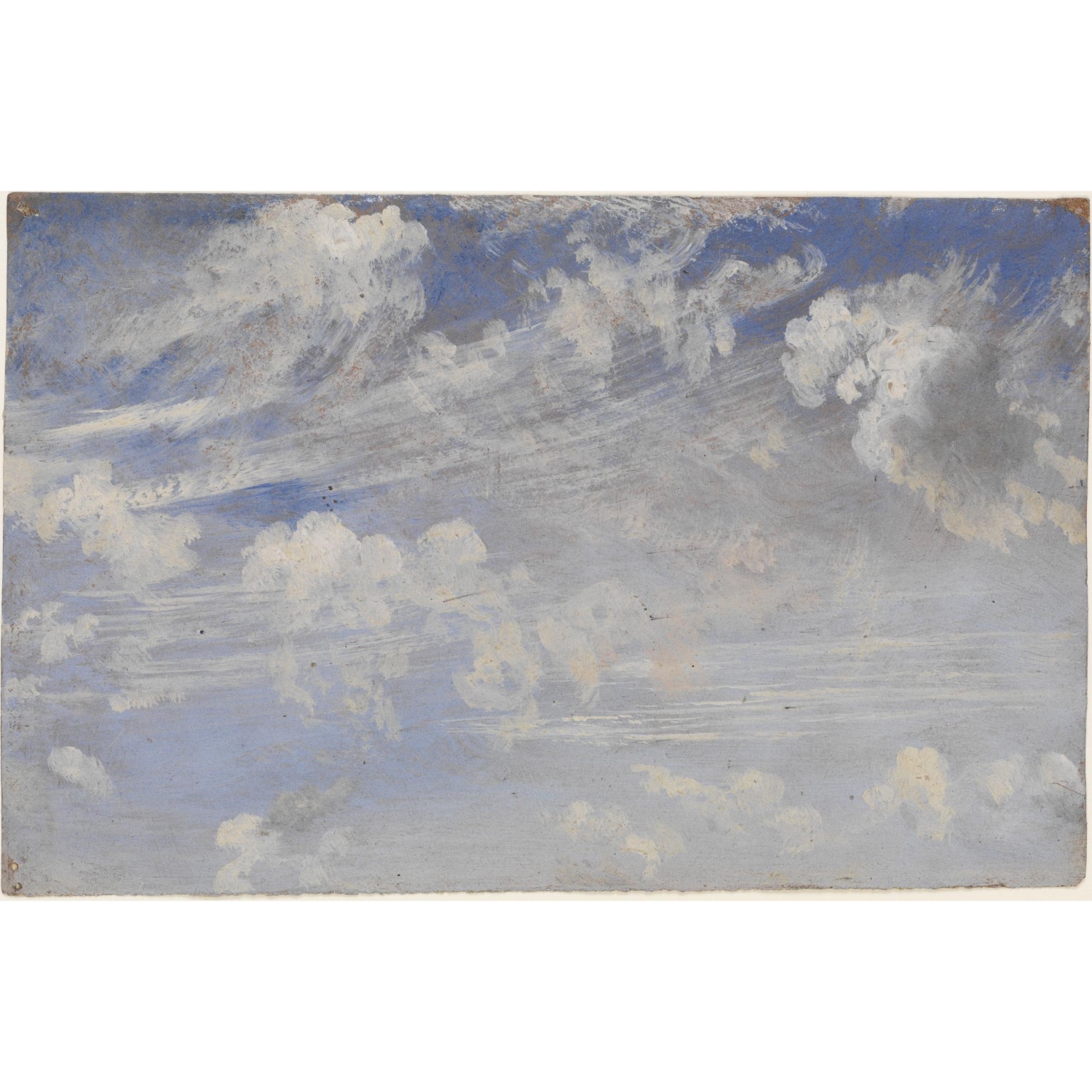Study of Cirrus Clouds by nineteenth-century English artist John Constable illustrates the painter’s remarkable attention to cloud detail. Constable took an almost scientific approach to cloudspotting, claiming in a lecture that ‘We see nothing truly till we understand it.’ This painting was one of his many Cloud Studies, sketches of the sky that he painted exclusively in the early 1820s and never intended for exhibition. In it, he portrays a mixed sky with formations at all three of the cloud levels.
Mid-level Altocumulus floccus clouds appear in the top left, with trails known as virga hanging from them. The hooked forms of the high cloud Cirrus uncinus are in the top right, while more distant straight, long filaments of Cirrus fibratus appear below. And low cloud formations feature too, down at the bottom of the sketch, in the form of broken-looking shreds of cloud known as Cumulus fractus. In a letter to a friend in 1821, Constable wrote, ‘It will be difficult to name a class of landscape in which the sky is not the keynote, the standard of scale, and the chief organ of sentiment … The sky is the source of light in Nature, and governs everything.’
Study of Cirrus Clouds (c. 1822) by John Constable is in the collection of the Victoria and Albert Museum, London, England. Constable’s quotes are from ‘The History of Landscape Painting’, third lecture, Royal Institution (June 9, 1836) and an 1821 letter to his friend John Fisher.



